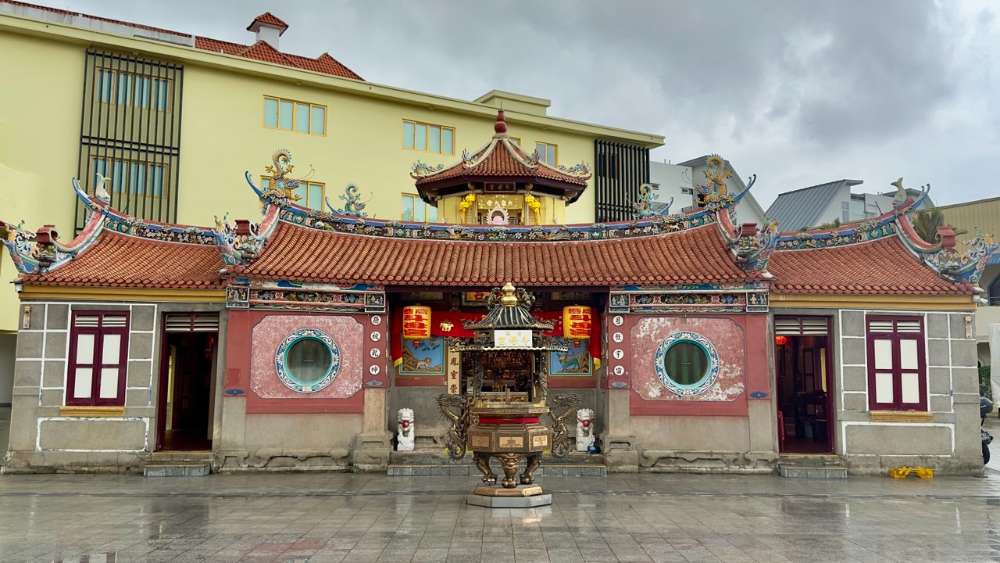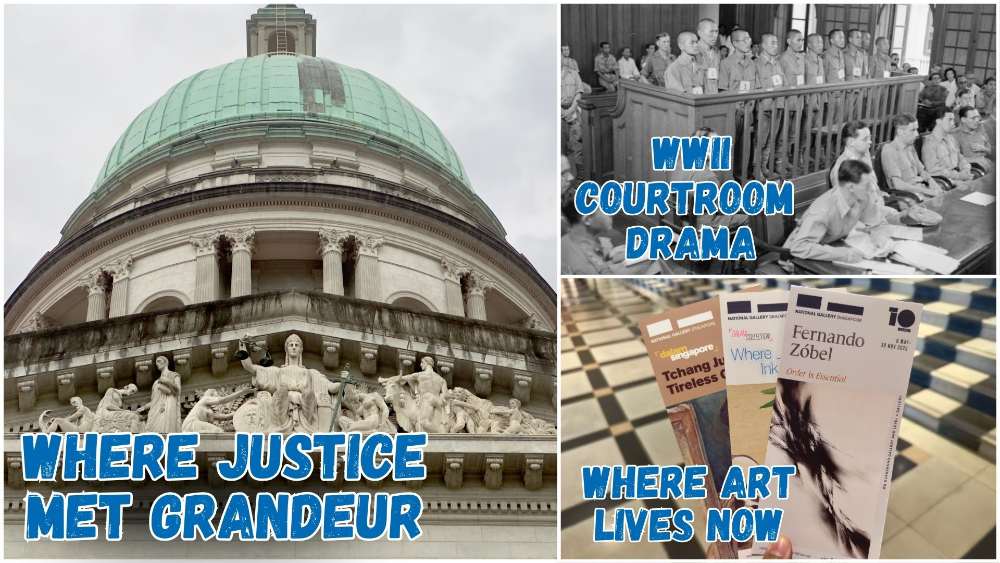National Monuments Of Singapore: Tou Mu Kung Temple
What is a National Monument? Who gazettes them? How many national monuments are there in Singapore? To date, the Preservation of Sites and Monuments, a division of National Heritage Board, has identified and gazetted 75 buildings, structures and sites of national significance as an integral part of Singapore’s built heritage.
And we're here to tell you all about them - one National Monument at a time!
You've probably passed by or stepped into more than a few of them without realising they were National Monuments: Al-Abrar Mosque, Asian Civilisations Museum, the Civilian War Memorial, Saint Andrew's Cathedral, the Esplanade Park Memorials, Fort Siloso on Sentosa - no need to plan an itinerary for friends visiting from overseas; just show them this article ✌️
In this edition, we cast a spotlight on Tou Mu Kung temple, the oldest temple in Singapore dedicated to worshipping the Taoist deity 九皇爷 (Jiu Huang Ye or "Nine Emperors God").
📍 Location
Tou Mu Kung temple was the 54th structure to be gazetted as a National Monument. Located near other National Monuments such as Alkaff Upper Serangoon Mosque, and the Church of the Nativity of the Blessed Virgin Mary, the MRT stations nearest to Tou Mu Kung temple are Serangoon and Kovan.
📅 Significant dates
Date built:
- 1919-1921: Tou Mu Kung temple was built in Hougang
Milestones:
- 1925-1998: A stage was erected for wayang (traditional Chinese opera) performances, but later demolished
- Aug 2004: The Attorney-General's Chambers handed over management of the temple to the Singapore Taoist Federation
- 31 Mar 2015: Five representatives across various Taoist temples and organisations were appointed as trustees of the temple
Date gazetted: 14 Jan 2005
📜 History
Tou Mu Kung temple began as a modest home shrine in Lorong Chuan, established by Ong Choo Kee (王珠玑), a Chinese merchant from Nan’an County in Fujian, China. He had vowed to honour Jiu Huang Ye for life if his business ventures in Penang succeeded. Following his success, the shrine gained popularity, attracting more worshippers. Among them was Ong Chwee Tow (王水斗), a wealthy Hokkien pineapple tycoon who donated land in Hougang for the building of a proper temple. Construction started in 1919, and the temple was completed by 1921.
Hougang, known as "Aukang" in Teochew, translates to "back of the port". Initially, Teochews lived around the Singapore River before settling in Hougang, where many worked as fishermen, farmers, and rubber tappers. As the population grew, Hougang developed into a suburb of Singapore.
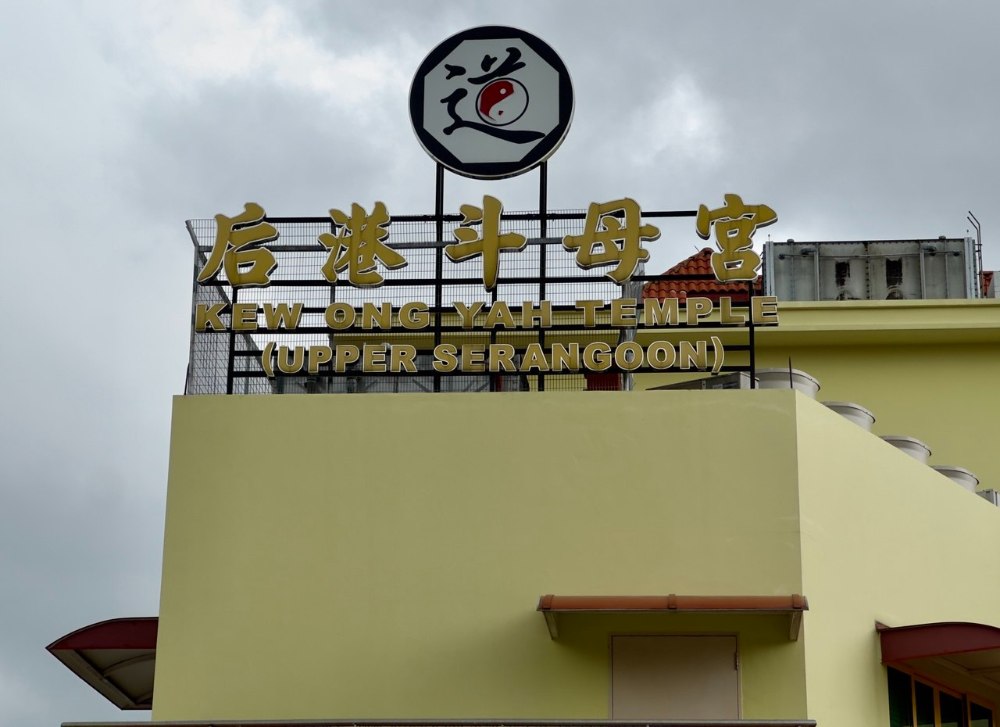 IMAGE: NG KAI
IMAGE: NG KAI
Tou Mu Kung is known to the Hokkien community as Kew Ong Yah or Kau Ong Yah Temple (九皇爷庙, "Temple of the Ninth Emperor"), reflecting its dedication to Jiu Huang Ye.
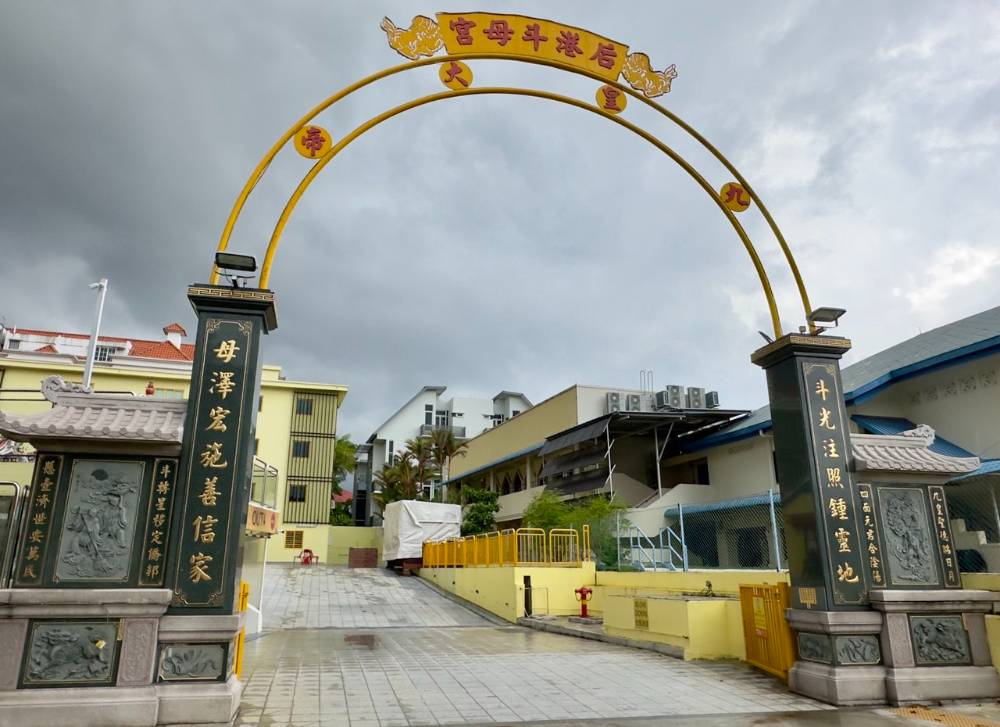 The official name of the temple, Hou Gang Dou Mu Gong, features prominently on an arch leading to the temple. | IMAGE: NG KAI
The official name of the temple, Hou Gang Dou Mu Gong, features prominently on an arch leading to the temple. | IMAGE: NG KAI
Even though the temple is dedicated to Jiu Huang Ye, it is officially named after another deity, Dou Mu Yuan Jun (斗母元君), the mother of Jiu Huang Ye. Revered as the holder of the Registrar of Life and Death, she is worshipped by devotees seeking longevity and protection from misfortune.
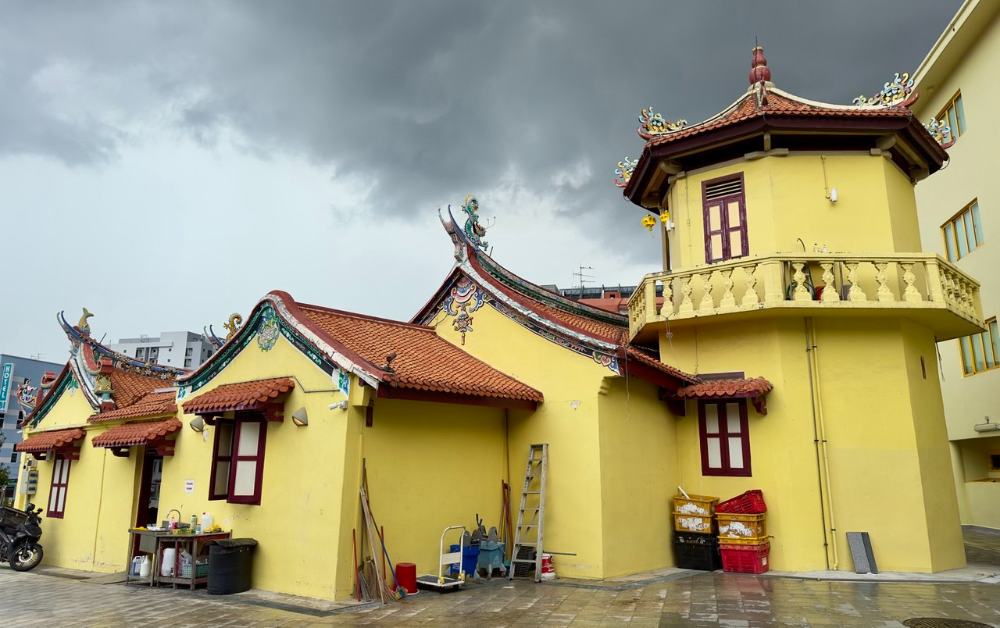 The two-storey pagoda of the temple on the far right. | IMAGE: NG KAI
The two-storey pagoda of the temple on the far right. | IMAGE: NG KAI
According to one legend, Jiu Huang Ye represents the nine stars of the Big Dipper constellation, including two invisible stars. Another tale portrays Jiu Huang Ye as a single entity represented by an incense burner rather than a statue. Tou Mu Kung temple follows this tradition, enshrining the sacred incense burner on the upper floor of the two-storey pagoda behind the temple, accessible only to men.
Each year, during the first nine days of the ninth month, devotees hold a grand festival to invite Jiu Huang Ye down to earth for his nine-day birthday celebration. And on the ninth day of the festival, the highlight of that day is a grand procession of nine elaborately decorated sedan chairs. For the devotees, the rocking movements of these sedans are seen as manifestations of Jiu Huang Ye’s divine power.
Other deities worshipped at Tou Mu Kung temple include Xuan Tian Shang Di (玄天上帝, "Heavenly Emperor"), Guan Sheng Di Jun (关圣帝君, or Guan Yu, the deified general from the Three Kingdoms era), and Guan Yin (观音, the Goddess of Mercy).
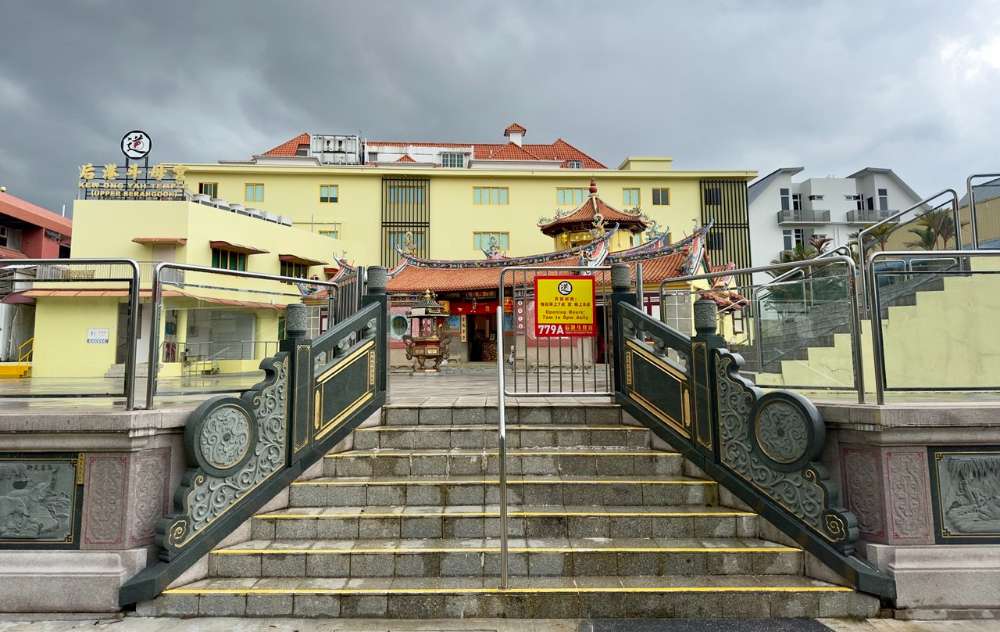 IMAGE: NG KAI
IMAGE: NG KAI
Today, despite the existence of other temples dedicated to Jiu Huang Ye, Tou Mu Kung temple remains one of Singapore's most popular places of worship for devotees of the deity.
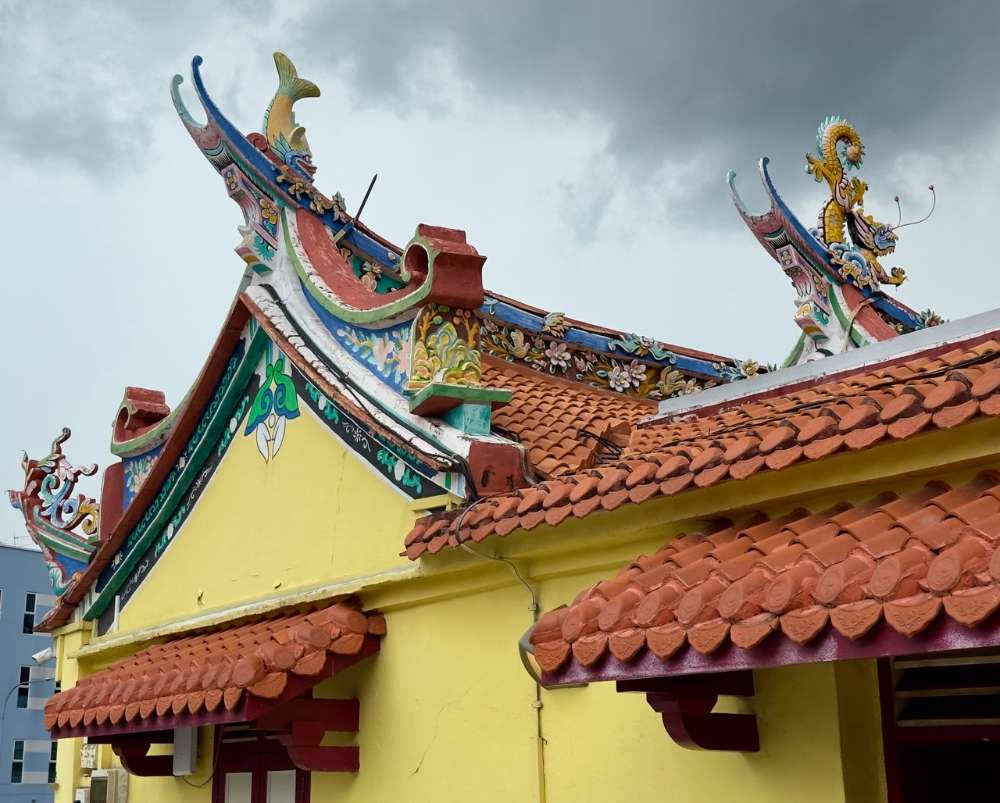 IMAGE: NG KAI
IMAGE: NG KAI
📐 Design and architecture
The original Tou Mu Kung temple was built in a traditional Hokkien architectural style common in Quanzhou, Fujian Province, featuring roof ridges with pronounced curves. Similar features can be seen on the roof of Thian Hock Keng, one of Singapore’s oldest Hokkien temples. Later renovations incorporated Teochew architectural elements, such as straighter roof ridges resembling those on Yueh Hai Ching Temple, reflecting the presence of Teochew immigrants in the area.
 IMAGE: NG KAI
IMAGE: NG KAI
The temple follows the classic three-hall layout of Chinese temples, comprising an entrance hall, main hall, and rear hall, though these are so compact that they appear as one unit.
A permanent stage, added in 1925, was once used for wayang (traditional Chinese opera) performances during festivities commemorating Jiu Huang Ye. Although this stage was demolished in 1998 for road-widening, temporary stages continue to be erected annually for the festival.
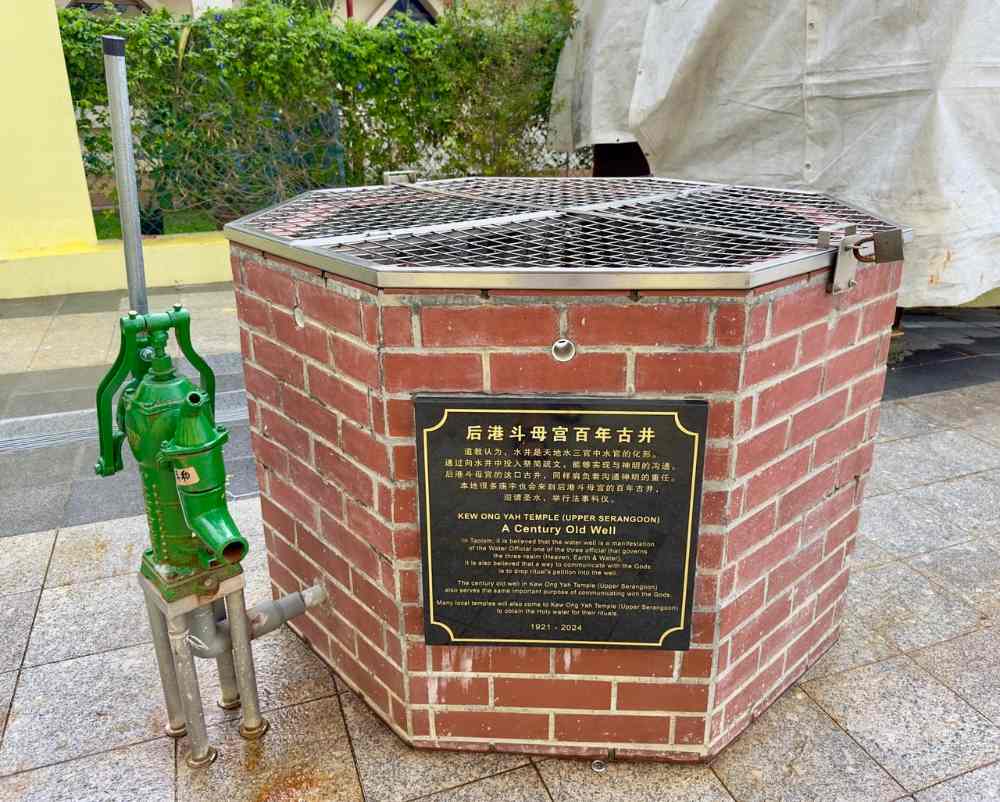 IMAGE: NG KAI
IMAGE: NG KAI
Behind the temple, there is an old well that is at least a century old (according to the temple) that visitors draw water from to wash their hands and faces for good luck.
🕖 Opening hours
Regular visiting hours are 7am to 8pm daily. Find out more here.
🎟️ Admission
Entry is free.
For the latest updates on Wonderwall.sg, be sure to follow us on TikTok, Telegram, Instagram, and Facebook. If you have a story idea for us, email us at [email protected].







